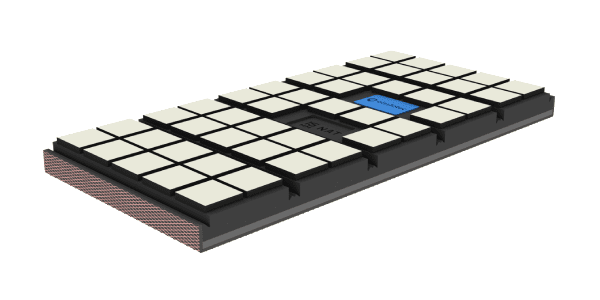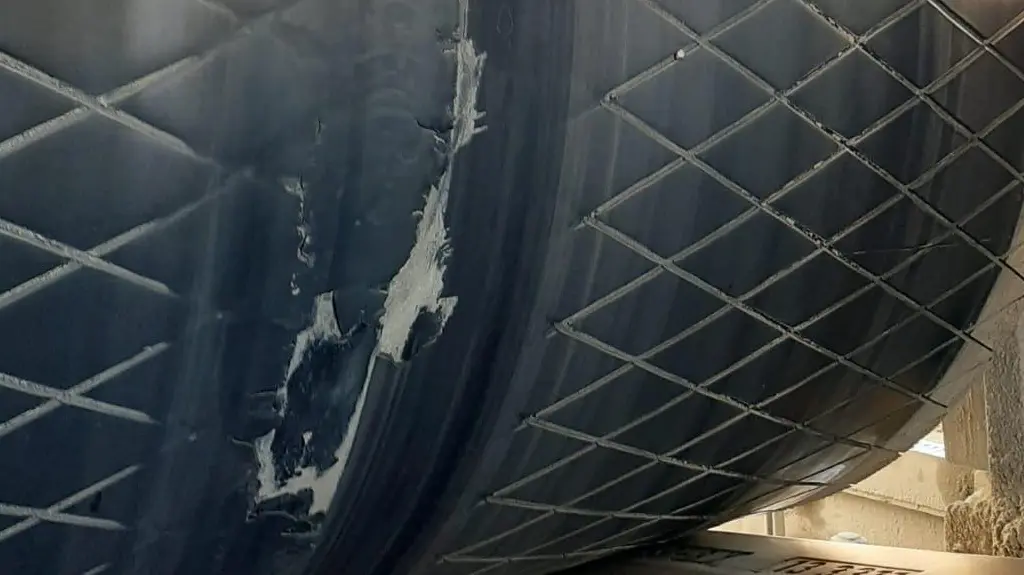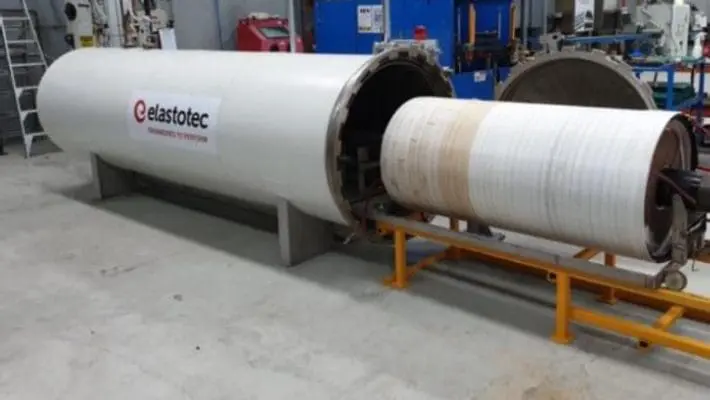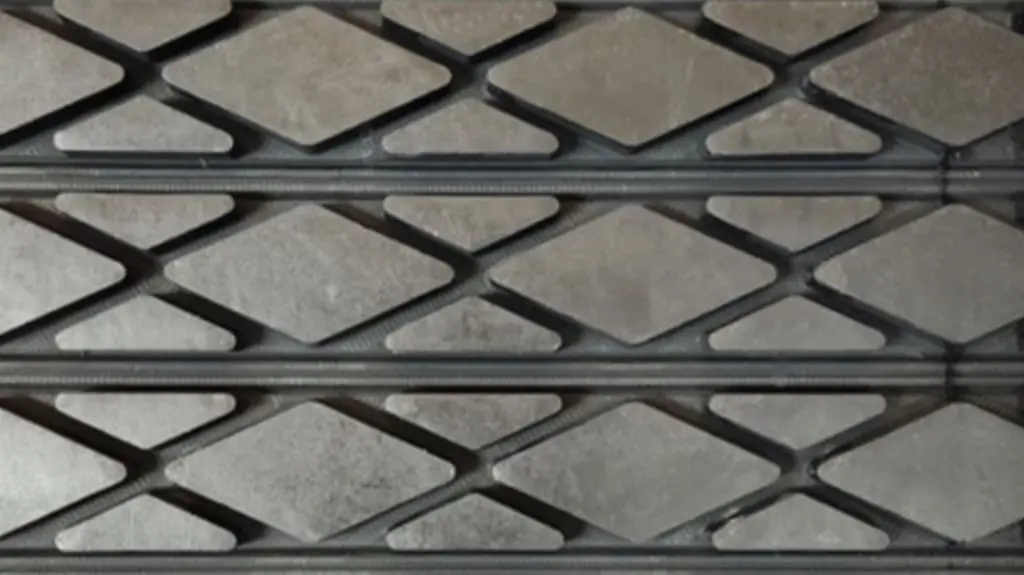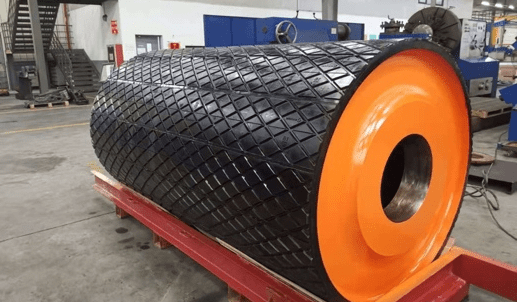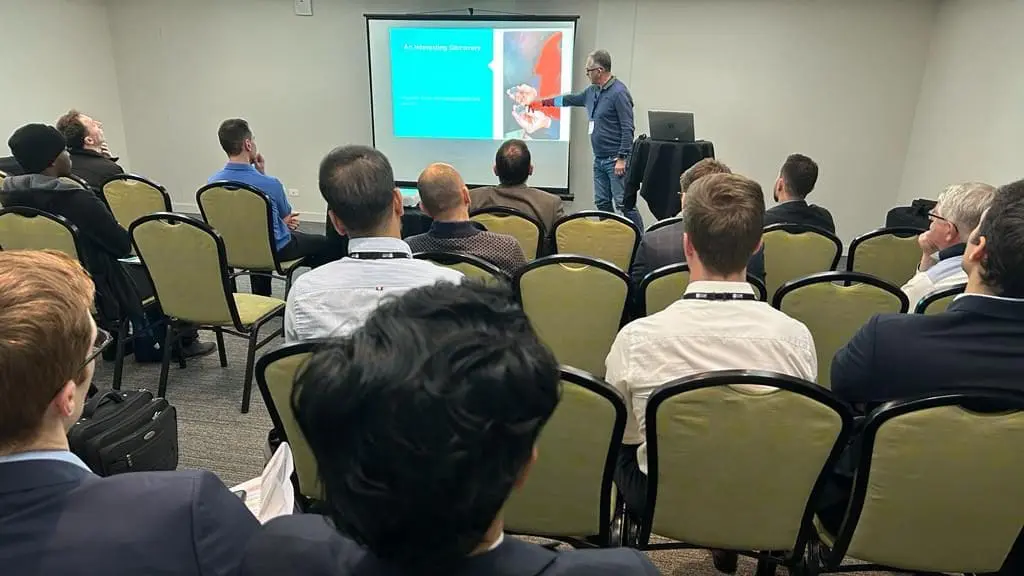Elastotec Metal Primer S2207 – Material Safety Data Sheet
| Date prepared: | 15/12/2016 | Reasons for issue: | Review |
| Date last reviewed: | 04/05/2021 | Next review: | 04/05/2026 |
| Manufacture/Importer Details | |||
| Business name | Elastotec P/L | ABN | 65 137 437 239 |
| Telephone | +61 2 8987 1922 | ||
| Address | Unit 1 / 61 Somersby Falls Road, Somersby NSW 2250 Australia | ||
| Emergency Contact | |||
| Business name | Elastotec P/L | Telephone | As above or after hours +61 423 200 178 |
| david@elastotec.com.au | |||
Section 1: Product Identification
| Product Name: | Elastotec Metal Primer S2207 |
|---|---|
| Adhesive Other Means of Identification: | Mixture |
| Other Names: | S2207 primer |
| Recommended Use of the Chemical and Restriction on Use: | Primer |
Section 2: Hazards Identification
| Signal Word | Danger | ||||||
|---|---|---|---|---|---|---|---|
| Hazardous Nature: | Classified as Hazardous according to the Globally Harmonised System of Classification and Labelling of Chemicals (GHS) and Safe Work Australia criteria. Classified as Dangerous Goods according to the Australian Code for the Transport of Dangerous Goods by Road and Rail (7th edition). | ||||||
| Hazardous Nature: | Flam. Liq. 2 | H225 | Highly flammable liquid and vapour. | ||||
| Hazardous Nature: |  | Repr. 1 | H360 | Might damage fertility or the unborn child. | |||
| Hazardous Nature: |  | STOT RE 2 | H373 | May cause damage to organs through prolonged or repeated exposure. | |||
| Hazardous Nature: |  | Skin Irrit. 2 | H315 | Causes skin irritation. | |||
| Hazardous Nature: |  | Eye Irrit. 2A | H319 | Causes serious eye irritation. | |||
| Hazardous Nature: |  | STOT SE 3 | H336 | May cause drowsiness or dizziness. | |||
| Signal Word: | Danger | ||||||
| Hazard Statements | ||
|---|---|---|
| H225 | Highly flammable liquid and vapour. | |
| H315 | Causes skin irritation. | |
| H319 | Causes serious eye irritation. | |
| H360 | Might damage fertility or the unborn child. | |
| H336 | May cause drowsiness or dizziness. | |
| H373 | May cause damage to organs through prolonged or repeated exposure. | |
| H304 | May be fatal if swallowed and enters airways. | |
| Precautionary Statements | ||
|---|---|---|
| P210 | Keep away from heat/sparks/open flames/hot surfaces. No smoking. | |
| P241 | Use explosion-proof electrical, ventilating, lighting and all other equipment. | |
| P260 | Do not breathe dust, fume, gas, mist, vapours or spray. | |
| P280 | Wear protective gloves/protective clothing/eye protection/face protection. | |
| P240 | Ground/bond container and receiving equipment. | |
| P242 | Use only non-sparking tools. | |
| P273 | Avoid release to the environment. | |
| P243 | Take precautionary measures against static discharge. | |
| P264 | Wash hands thoroughly after handling. | |
| P271 | Use only outdoors or in a well-ventilated area. | |
| P201 | Obtain special instructions before use. | |
| P202 | Do not handle until all safety precautions have been read and understood. | |
| P301 + P310 | IF SWALLOWED: Immediately call a POISON CENTER/ doctor. | |
| P303 + P361 + P353 | IF ON SKIN (or hair): Take off immediately all contaminated clothing. Rinse skin with water/shower. | |
| P305 + P351 + P338 | IF IN EYES: Rinse cautiously with water for several minutes. Remove contact lenses, if present and easy to do. Continue rinsing | |
| P321 | Specific treatment (see on this label). | |
| P304 + P340 | IF INHALED: Remove person to fresh air and keep comfortable for breathing. | |
| P312 | Call a POISON CENTER/doctor if you feel unwell. | |
| P308 + P313 | IF exposed or concerned: Get medical advice/attention. | |
| P332 + P313 | If skin irritation occurs: Get medical advice/attention. | |
| P337 + P313 | If eye irritation persists: Get medical advice/attention. | |
| P337 + P313 | If eye irritation persists: Get medical advice/attention. | |
| P314 | Get medical advice/attention if you feel unwell. | |
| P331 | Do NOT induce vomiting. | |
| P370 + P378 | In case of fire: Use for extinction: CO2 , powder or water spray. | |
| P391 | Collect spillage | |
| P362 + P364 | Take off contaminated clothing and wash it before reuse. | |
| P405 | Store locked up. | |
| P403 + P233 | Store in a well-ventilated place. Keep container tightly closed. | |
| P403 + P235 | Store in a well-ventilated place. Keep cool. | |
| P501 | Dispose of contents/container in accordance with local/regional/national regulations. | |
| P314 | Get medical advice/attention if you feel unwell. | |
| P331 | Do NOT induce vomiting. | |
| P370 + P378 | In case of fire: Use for extinction: CO2 , powder or water spray. | |
| P391 | Collect spillage. | |
| P362 + P364 | Take off contaminated clothing and wash it before reuse. | |
| P405 | Store locked up. | |
| P403 + P233 | Store in a well-ventilated place. Keep container tightly closed. | |
| P403 + P235 | Store in a well-ventilated place. Keep cool. | |
| P501 | Dispose of contents/container in accordance with local/regional/national regulations. | |
Section 3: Composition / Information On Ingredients
| column1 | column2 | column3 | column4 | |||
|---|---|---|---|---|---|---|
| Chemical Characterization: | Mixtures | |||||
| Description: | Mixture of substances listed below with nonhazardous additions. | |||||
| Product consists of a blend of solvents including those listed below: | ||||||
| Chemical Name | Cas No. | Proportion (w/w) | ||||
| Toluene | 108-88-3 | 70–95% | ||||
Section 4: First Aid Measures
| First Aid | Measure |
|---|---|
| Inhalation: | If inhaled, remove to fresh air. If not breathing, give artificial respiration. If breathing is difficult, give oxygen. Seek medical attention if breathing problems develop. |
| Skin Contact: | In case of skin contact, immediately remove contaminated clothing and wash affected areas with water and soap. Seek medical attention if symptoms occur. |
| Eye Contact: | In case of eye contact, hold eyelids open and rinse with water for at least 15 minutes. Seek medical attention if symptoms persist. |
| Ingestion: | If swallowed, do not induce vomiting. If vomiting occurs spontaneously, keep head below hips to prevent aspiration. Do not give anything by mouth to an unconscious person. Seek immediate medical attention. |
| Symptoms Caused by Exposure: | Inhalation: May cause respiratory irritation. May cause drowsiness or dizziness, headache, shortness of breath, nausea and fatigue. Higher concentrations may cause Central Nervous System (CNS) depression, incoordination and impaired judgement. Skin Contact: Causes skin irritation. May cause redness or rash. Eye Contact: Causes serious eye irritation. May cause stinging, tearing, redness and swelling. Ingestion: May cause gastrointestinal irritation, abdominal pain, nausea, vomiting and diarrhoea. May cause CNS depression, dizziness, drowsiness, headache, confusion, muscular weakness and unconsciousness. May be fatal if swallowed and enters airways. |
Section 5: Fire Fighting Measures
| First Aid | Measure |
|---|---|
| Suitable Extinguishing Media | Foam, dry chemical or carbon dioxide. Do not use water jet. |
| Specific Hazards Arising from the Chemical: | Hazardous combustion products include oxides of carbon, oxides of magnesium, hydrogen chloride,chloroprene formaldehyde and phenolic derivatives. Product is highly flammable. Vapours may travel considerable distances to a source of ignition where they can ignite, flashback, or explode. Closed containers may explode when exposed to extreme heat. Containers close to fire should be removed if safe to do so. Use water spray to cool fire exposed containers. |
| Special Protective Equipment & Precautions for Fire Fighters | When fighting a major fire wear self-contained breathing apparatus and protective equipment. |
Section 6: Accidental Release Measures
| First Aid | Measure |
|---|---|
| Personal Precautions, Protective Equipment and Emergency Procedures: | Wear approved respiratory protection, chemical resistant gloves, protective clothing and safety boots. Evacuate all non-essential personnel from affected area. Do not breathe vapours. Ensure adequate ventilation. Extinguish all sources of ignition. Avoid sparks and open flames. No smoking. |
| Environmental Precautions: | In the event of a major spill, prevent spillage from entering drains or water courses. |
| Methods and materials for containment and cleaning up: | Stop leak if safe to do so and absorb spill with sand, earth, vermiculite or some other absorbent material. Do not use combustible materials such as sawdust. Collect the spilled material and place into a suitable container for disposal. Use only non-sparking tools. |
Section 7: Handling And Storage
| First Aid | Measure |
|---|---|
| Precautions for Safe Handling: | Use of safe work practices are recommended to avoid eye or skin contact and inhalation of vapours. Use only outdoors or in a well-ventilated area. Take precautionary measures against static discharge. Food, beverages and tobacco products should not be stored or consumed where this material is in use. Always wash hands before smoking, eating, drinking or using the toilet. Wash contaminated clothing and other protective equipment before storage or re-use. Provide eyewash fountains and safety showers in close proximity to points of potential exposure. |
| Conditions for Safe Storage: | Store in a cool, dry and well ventilated area. Do not use or store in confined spaces. Keep container tightly closed when not in use. Protect from heat, sparks, open flames, hot surfaces and direct sunlight. Protect containers from physical damage. Keep away from strong oxidising agents. Do not pressurise, heat, weld, cut or drill on full or empty containers. Handling equipment must be grounded to prevent sparking. |
Section 8: Exposure Controls & Personal Protection
| NES | |||
|---|---|---|---|
| NES | |||
| Exposure standards: | 108-88-3 Benzene, methyl- | STEL: 574 mg/m³, 150 ppm TWA: 191 mg/m³, 50 ppm Sk | |
| Engineering Controls: | Maintain air concentration below occupational exposure standards, providing adequate ventilation. Use explosion-proof ventilating equipment. | ||
| Respiratory Protection: | Use an approved organic vapour respirator under conditions where exposure to the substance is apparent (e.g. generation of high concentrations of mist or vapour, inadequate ventilation, development of respiratory tract irritation) and engineering controls are not feasible. See Australian Standards AS/NZS 1715 and 1716 for more information | ||
| Skin Protection: | Impervious gloves. See Australian/New Zealand Standard AS/NZS 2161 for more information. When selecting gloves for use against certain chemicals, the degradation resistance, permeation rate and permeation breakthrough time should be considered. Occupational protective clothing (depending on conditions in which it has to be used, in particular as regards the period for which it is worn, which shall be determined on the basis of the seriousness of the risk, the frequency of exposure to the risk, the characteristics of the workstation of each worker and the performance of the protective clothing). See Australian/New Zealand Standard AS/NZS 4501 for more information. | ||
| Eye and Face Protection: | Eye and face protectors for protection against splashing materials or liquids. See Australian/New Zealand Standard AS/NZS 1337 for more information | ||
Section 9: Physical And Chemical Properties
| First Aid | Measure |
|---|---|
| Appearance – Form: | Liquid |
| Appearance – Colour: | Clear |
| Odour: | Typical hydrocarbon odour. |
| Odour Threshold: | No information available. |
| pH-Value: | Not applicable. |
| Melting point/ Melting Range: | No information available |
| Initial Boiling Point/ Boiling Range: | > 50°C |
| Flash Point: | < -20°C (Closed Cup) |
| Flammability: | Highly flammable. |
| Auto-ignition Temperature: | No information available |
| Decomposition Temperature: | No information available |
| Explosion Limits – Lower: | No information available |
| Explosion Limits – Upper: | No information available |
| Vapour Pressure: | No information available |
| Relative Density: | ~0.87 |
| Vapour Density: | No information available |
| Evaporation Rate: | No information available |
| Solubility in Water: | Insoluble |
Section 10: Stability And Reactivity
| First Aid | Measure |
|---|---|
| Possibility of Hazardous Reactions: | Hazardous polymerisation will not occur. Possible hazardous reaction with strong oxidising agents. |
| Chemical Stability: | Stable at ambient temperature and under normal conditions of use. |
| Conditions to Avoid: | Heat, sparks, open flames, hot surfaces and direct sunlight. |
| Incompatible Materials: | Strong oxidising agents. |
| Hazardous Decomposition Products: | Oxides of carbon, oxides of magnesium, hydrogen chloride, chloroprene formaldehyde and phenolic derivatives. |
Section 11: Toxicological Information
| column2 | column3 | ||||
|---|---|---|---|---|---|
| Toxicity: | LD50/LC50 Values Relevant for Classification: | ||||
| Toxicity: | 108-88-3 Benzene, methyl- | ||||
| Toxicity: | Oral | LD50 | 5000 mg/kg (rat) | ||
| Toxicity: | Dermal | LD50 | 12124 mg/kg (rabbit) | ||
| Toxicity: | Inhalation | LC50/4 h | 5320 mg/l (mouse) | ||
| Acute Health Effects | ||
|---|---|---|
| Inhalation: | May cause respiratory irritation. May cause drowsiness or dizziness, headache, shortness of breath, nausea and fatigue. Higher concentrations may cause Central Nervous System (CNS) depression, incoordination and impaired judgement. | |
| Skin: | Causes skin irritation. May cause redness or rash. | |
| Eye: | Causes serious eye irritation. May cause stinging, tearing, redness and swelling. | |
| Ingestion: | May cause gastrointestinal irritation, abdominal pain, nausea, vomiting and diarrhoea. May cause CNS depression, dizziness, drowsiness, headache, confusion, muscular weakness and unconsciousness. May be fatal if swallowed and enters airways. | |
| Skin Corrosion/Irritation: | Causes skin irritation. | |
| Serious Eye Damage/ Irritation: | Causes serious eye irritation. | |
| Respiratory or Skin Sensitisation: | Based on classification principles, the classification criteria are not met. | |
| Germ Cell Mutagenicity: | Based on classification principles, the classification criteria are not met. | |
| Carcinogenicity: | Toluene is classified by IARC as Group 3 – Not classifiable as to its carcinogenicity to humans. | |
| Reproductive Toxicity: | Suspected of damaging fertility or the unborn child. Benzene, methyl is classified by Safe Work Australia as Toxic to Reproduction Category 1. n-Hexane is classified by Safe Work Australia as Toxic to Reproduction Category 3. | |
| Specific Target Organ Toxicity (STOT) – Single Exposure: | May cause drowsiness and dizziness. | |
| Specific Target Organ Toxicity (STOT) – Repeated Exposure: | May cause damage to organs through prolonged or repeated exposure. | |
| Aspiration Hazard: | May be fatal if swallowed and enters airways. | |
| Chronic Health Effects: | Repeated and prolonged occupational overexposure may cause CNS depression leading to unconsciousness and death. Prolonged skin contact may cause skin dryness or cracking and dermatitis. May cause damage to liver and kidneys | |
| Existing Conditions Aggravated by Exposure: | Exposure may aggravate existing dermatitis and skin sensitivity | |
Section 12: Ecological Information
| First Aid | Measure |
|---|---|
| Aquatic Toxicity: | Toxic to aquatic life with long lasting effects. |
| Persistence and degradability: | No information available. |
| Bioaccumulative Potential: | No information available. |
| Mobility in Soil: | No information available. |
| Other Adverse Effects: | No information available. |
Section 13: Disposal Considerations
| First Aid | Measure |
|---|---|
| Disposal methods and containers: | Dispose according to applicable local and state government regulations. |
| Special Precautions for Landfill or Incineration: | Please consult your state Land Waste Management Authority for more information. |
Section 14: Transport Information
| First Aid | Measure |
|---|---|
| UN Number ADG, IMDG, IATA: | UN1133 |
| Proper Shipping Name ADG, IMDG, IATA: | ADHESIVES containing flammable liquid. |
| Dangerous Goods Class ADG Class: | 3 Flammable liquids. |
| Packing Group ADG, IMDG, IATA: | II |
| Marine Pollutant: | Yes Symbol (fish and tree) |
| EMS Number: | F-E,S-D |
| Hazchem Code: | .3YE |
| Limited Quantities: | 5L |
| Packagings & IBCs – Packing Instruction: | P001, IBC02 |
| Packagings & IBCs – Special Packing Provisions: | PP1 |
| Portable Tanks & Bulk Containers – Instructions: | T4 |
| Portable Tanks & Bulk Containers – Special Provisions: | TP1, TP8 |
Section 15: Regulatory Information
| First Aid | Measure | |
|---|---|---|
| Australian Inventory of Chemical Substances: | ||
| 108-88-3 | Benzene, methyl- | |
| Standard for the Uniform Scheduling of Drugs and Poisons (SUSMP) – Poison Schedule: | ||
| Poisons Schedule: | 5 | |
Section 16: Other Information
| Abbreviations and Acronyms | ||
|---|---|---|
| ADG | Australian Dangerous Goods | |
| IMDG | International Maritime Code for Dangerous Goods | |
| IATA | International Air Transport Association | |
| GHS | Globally Harmonised System of Classification and Labelling of Chemicals | |
| CAS | Chemical Abstracts Service (division of the American Chemical Society) | |
| LC50 | Lethal concentration, 50 percent | |
| LD50 | Lethal dose, 50 percent | |
| IARC | International Agency for Research on Cancer | |
| STEL | Short Term Exposure Limit | |
| TWA | Time Weighted Average | |
| NES | National Exposure Standard (Safe Work Australia – Workplace Exposure Standards For Airborne Contaminants) | |
| Flam. Liq. 2 | Flammable liquids, Hazard Category 2 | |
| Skin Irrit. 2 | Skin corrosion/irritation, Hazard Category 2 | |
| Eye Irrit. 2 | Serious eye damage/eye irritation, Hazard Category 2 | |
| Eye Irrit. 2A | Serious eye damage/eye irritation, Hazard Category 2A | |
| Repr. 2 | Reproductive toxicity, Hazard Category 2 | |
| STOT SE 3 | Specific target organ toxicity – Single exposure, Hazard Category 3 | |
| STOT RE 2 | Specific target organ toxicity – Repeated exposure, Hazard Category 2 | |
| Asp. Tox. 1 | Aspiration hazard, Hazard Category 1 | |
| Aquatic Acute 2 | Hazardous to the aquatic environment, short-term (Acute). Category 2 | |
| Aquatic Chronic 2 | Hazardous to the aquatic environment, long-term (Chronic). Category 2 | |
Disclaimer
This SDS is prepared in accord with the Safe Work Australia document “Code of Practice for the Preparation of Safety Data Sheets for Hazardous Chemicals – December 2011”.
The information contained in this safety data sheet is provided in good faith and is believed to be accurate at the date of issuance. Chemical Technology Pty Ltd makes no representation of the accuracy or comprehensiveness of the information and to the full extent allowed by law excludes all liability for any loss or damage related to the supply or use of the information in this material safety data sheet. MSDS.COM.AU Pty Ltd is not in a position to warrant the accuracy of the data herein. The user is cautioned to make their own determinations as to the suitability of the information provided to the particular circumstances in which the product is used.











